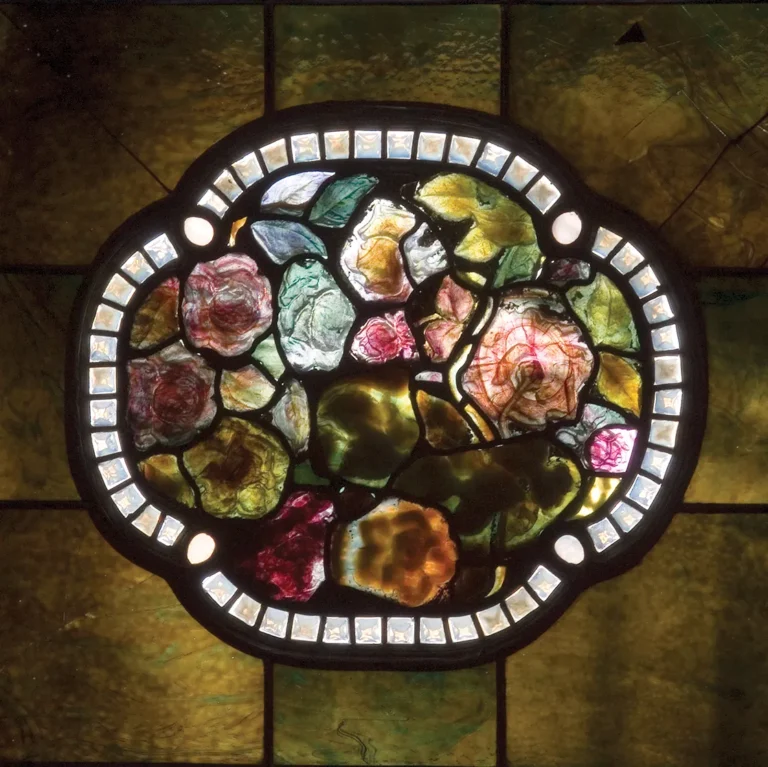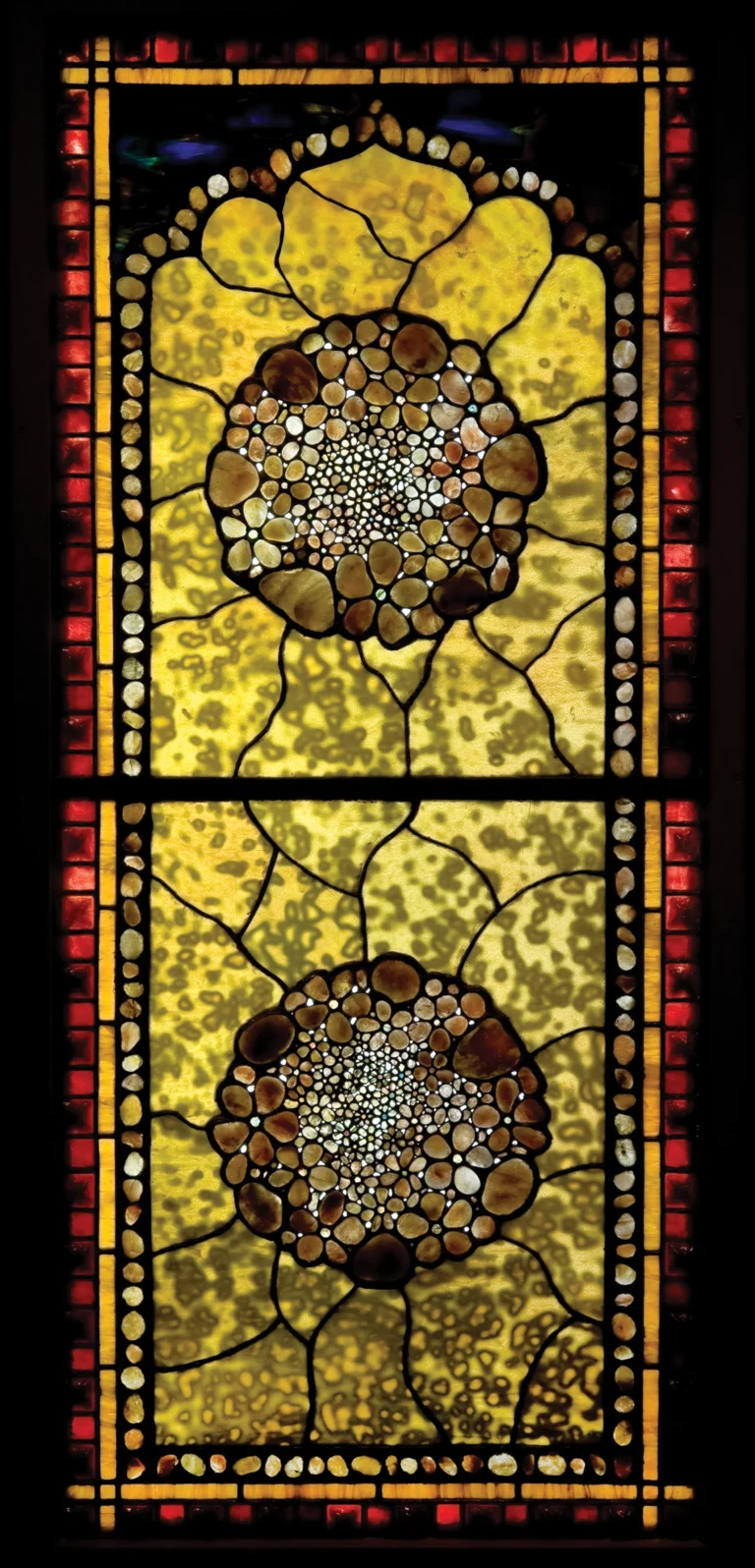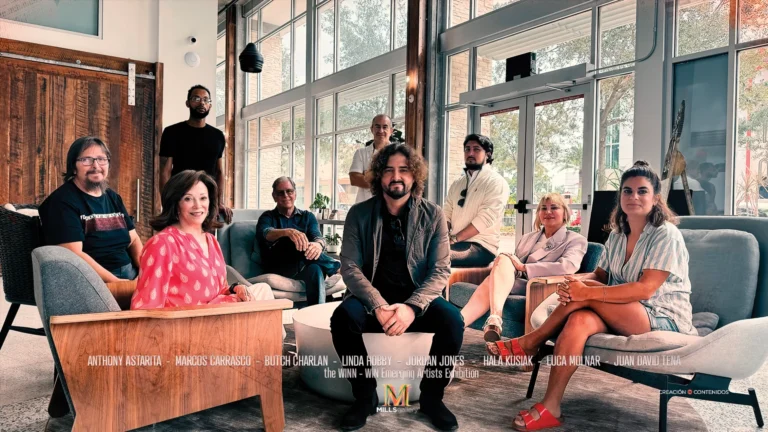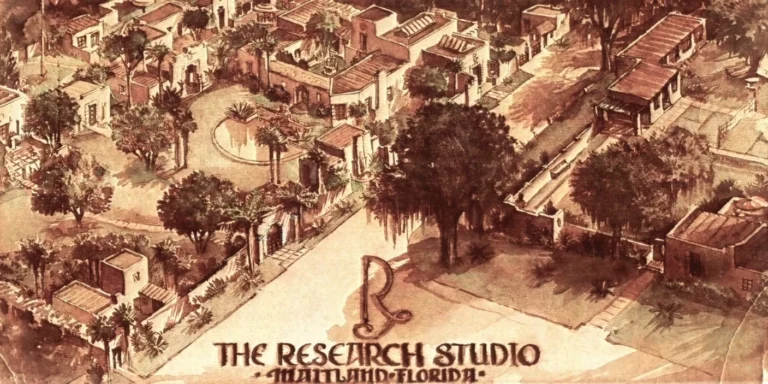

Breaking Tradition will feature nearly 30 objects, mostly stained-glass windows by Tiffany, including a window made of pebbles harvested from the beaches of Long Island and another made of opalescent glass and sporting a daffodil motif. Courtesy Charles Hosmer Morse Museum of American Art.
An exhibition at the Charles Hosmer Morse Museum of American Art, Breaking Tradition: Distinguishing American Stained Glass—set to open on Tuesday, October 14—will explore the rise of opalescent glass favored by Louis Comfort Tiffany and reveal the rivalry between “Team Opalescent” and “Team Antique.”
Until iridescent (almost hypnotic) opalescent glass burst onto the scene in the late 1800s, traditional antique stained glass—made with flat applied paints, stains or enamels—predominated among artisans. Opalescent glass, however, brought a new aesthetic to the industry and some controversy as well.
Rather than requiring the addition of color, opalescent glass infuses color into the glass and displays a range of hues that change with the angle of the light, like the inside of a seashell or an opal. It’s also highly textured, while antique stained glass is flat. That made opalescent glass much more naturalistic and better-suited for such secular subject matter as landscapes and flowers.
“Both techniques continued to be very popular,” says Kelly R. Rideout, the museum’s Hugh F. McKean Curator. “What was really interesting to me is that these two schools were bitterly divided—and there was a lot of discussion in trade circulars and art journals with the two of them going back and forth.”
The antique school just felt that this new medium was simply too commercial—a moneymaking scheme, really—and dismissed opalescent glass as “cotton candy,” adds Rideout.
Naturally, Tiffany disagreed, arguing that old-school adherents were “going by the letter of medieval stained-glass craftsmanship; I’m going by the spirit. If medieval craftsmen had the technologies that I have, they would be using them, too.”
Says Rideout: “So it’s really just a matter of taste, but also interesting. I think [the controversy] humanizes these artists, who really felt very strongly not just about the art that they were making, but the reason that they were making it.”
Nearly 30 objects will be included in Breaking Tradition, the majority of which will be windows made by Tiffany. Most notably, says Rideout, will be a window made from pebbles and another made from opalescent glass with a daffodil motif.
The windows, which are well-known by the artist’s aficionados, will be retrieved from storage and placed on display, along with design drawings and the patent for use of opalescent glass on leaded-glass windows held by Tiffany.
Two lectures that coincide with the exhibition are planned in the spring. Brianne Van Vorst, a stained-glass conservator, will be at the museum on Sunday, April 26, 2026, to discuss the conservation of a window from the Tiffany Glass and Decorating Company. Rideout will present a lecture for the Morse Monday series about American stained glass on Monday, April 27, 2026.
The Charles Hosmer Morse Museum of American Art is located at 445 North Park Avenue, Winter Park. For more information, call 407.645.5311 or visit morsemuseum.org.






